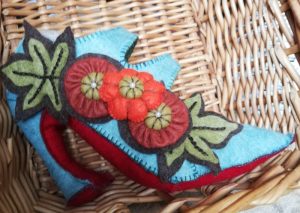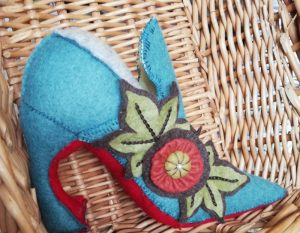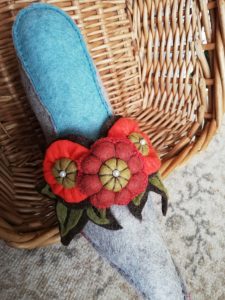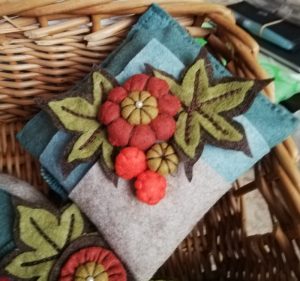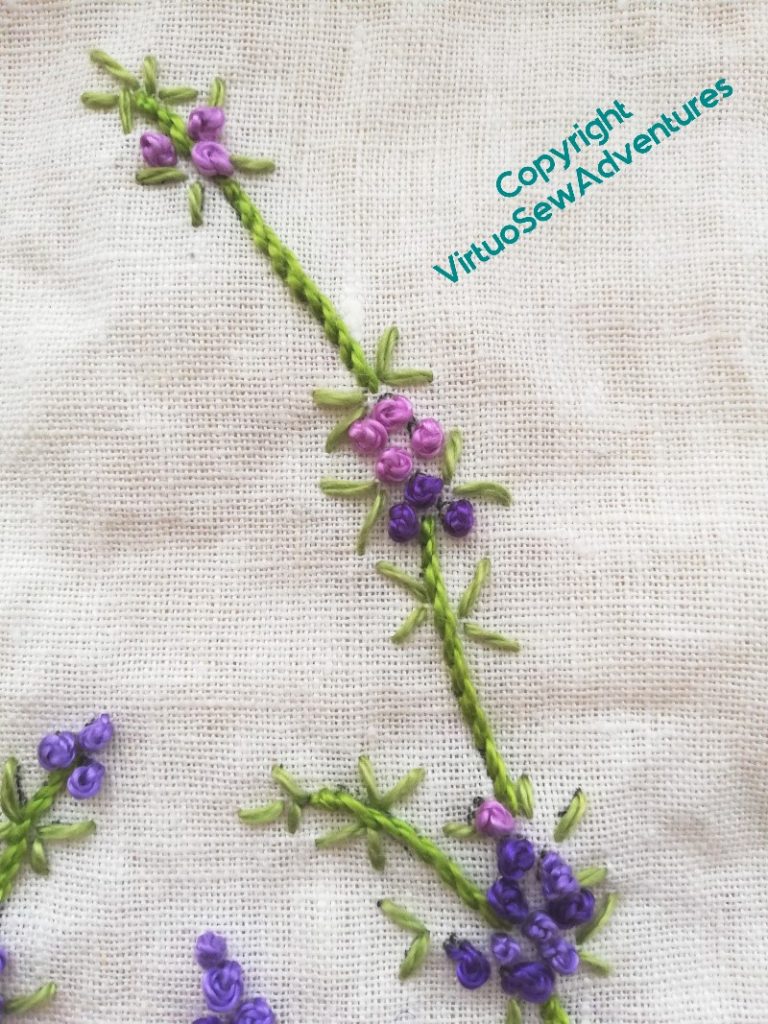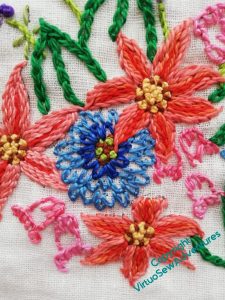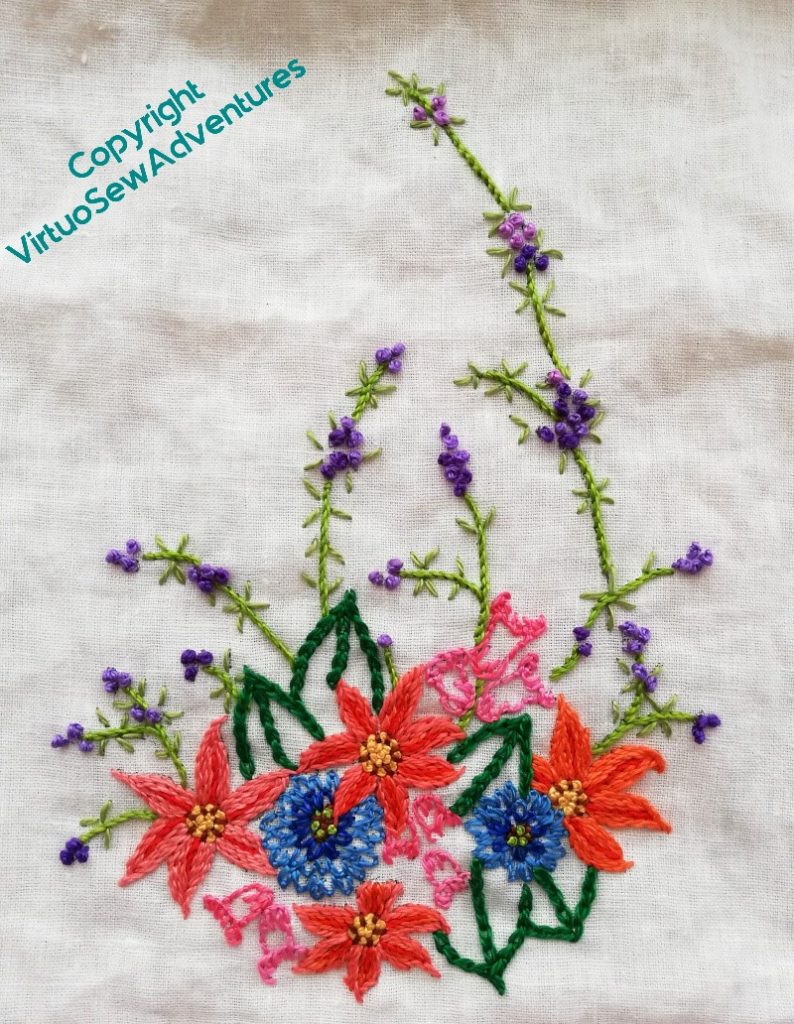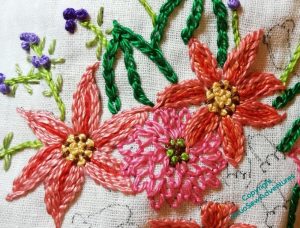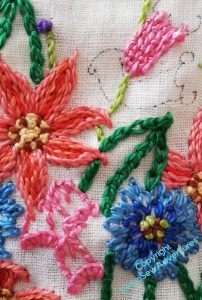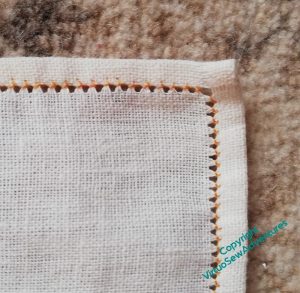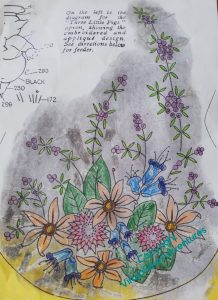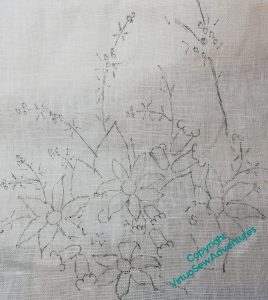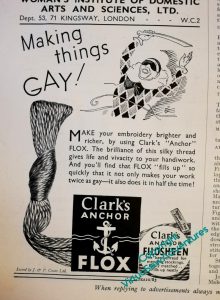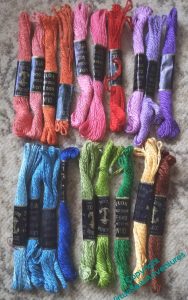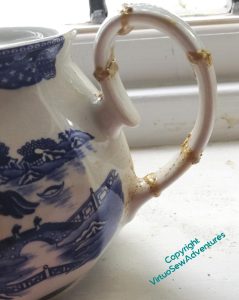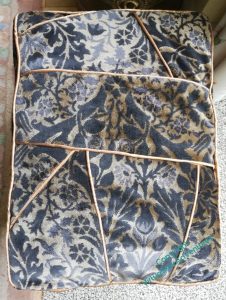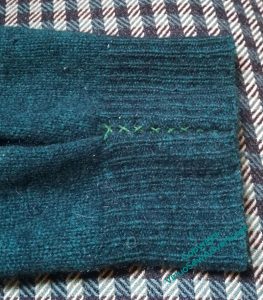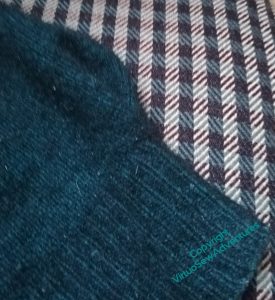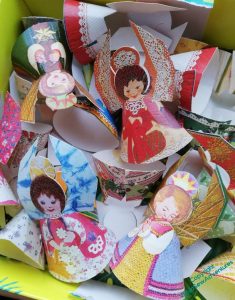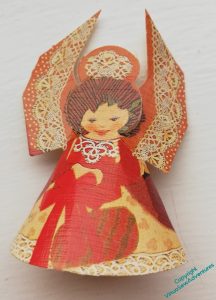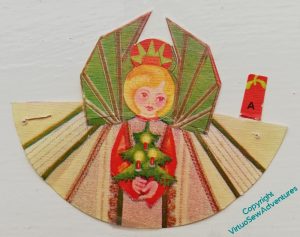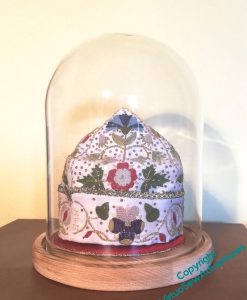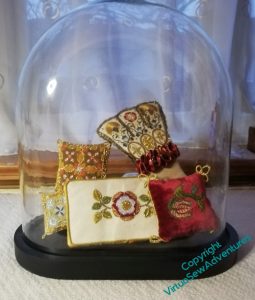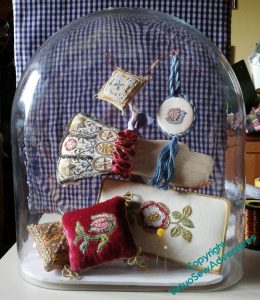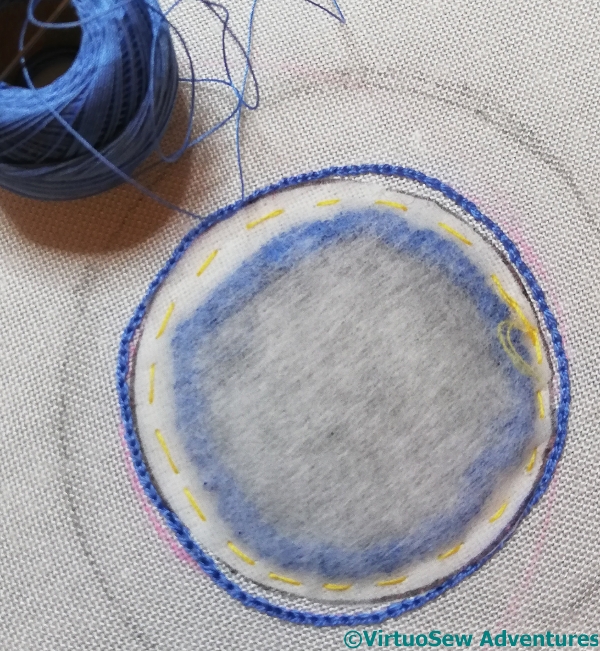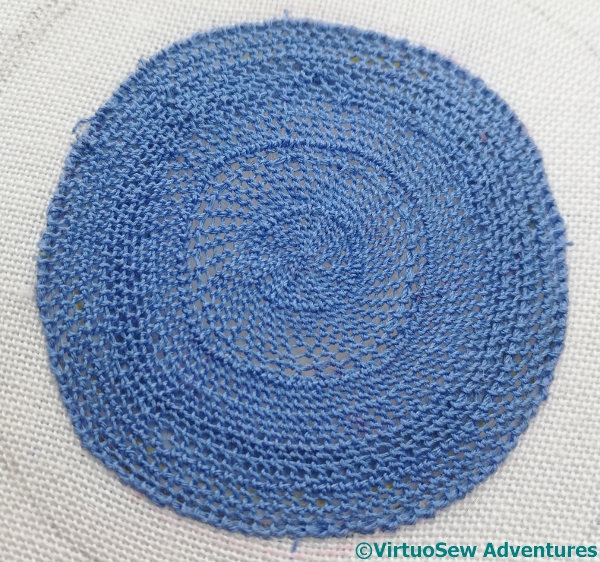Tag: interior decoration
Fabulous Felt Shoes Finished
Yet another Twixmas project that lasted longer than I anticipated…!
I enjoyed making these – the instructions were clear, and in fact, you make a basic court shoe shape, and then add variations and additions. Some of the felt I had was a little flimsy, so the two decorative additions to the first two shoes are both made of two layers of felt stitched together, using patterned blanket stitches, before I attached them to the shoes.
I varied the stitches I used, not quite following the instructions.
Of Course I Did.
The basic shoe shapes are put together using stab stitch, which I use when I’m making felt cradle toys. It’s secure, simple, and leaves a nice raised seam, which I think adds to, rather than detracts from, the finished effect.
I think the instructions suggest back stitch for the leaves, but I’ve chosen reverse chain stitch. I like the solidity of the line, and it somehow enhances the slight dimensionality of attaching the two leaves together.
The instructions also suggest ready made felt balls for the flower centres – I didn’t have any, so I just made small stuffed balls of the same felt as the leaves. And there are two sorts of flower – one is made of two discs stitched together and stuffed, the other is, effectively, a Suffolk Puff.
I think they are both charming!
Once I’d done the shoes I gave some attention to hanging them. I had some felt left over, so I made a small felt cushion using the shoe colours, and then made some more flowers and leaves.
The finished mobile is delightful, but it goes very badly with my studio, which is still decorated in the taste of the previous people to live here – yellow (no quarrel with that) with a border panel in pink, blue, and green.
I’m going to have to redecorate the studio, aren’t I!
Playing with Flox 4 – finish
I worked both ends of the table runner at the same time, because I thought that would enable me to see the whole thing as a single piece, rather than two pieces the same. As I’ve said many times, I have a real problem with repeating motifs, and this is one way I try to trick myself into not seeing the repeats, as it were.
The other thing I did was to put the stems in quite early on in the process. Partly because it was an easy choice to make, and partly because one of my other discoveries over the years is just how much different it makes to the sense of making progress if the design is visually joined up. “Spotty” designs are very discouraging, but if the design elements are linked, somehow progress is easier to see.
In the picture here, you see most of the decisions I made for the main section. Each of the orange petalled flowers uses a different combination of the several orange threads I had in my bundle, which turned out to be just as well, as it makes it look deliberate while reducing the terrors of playing Thread Chicken.
I also learnt from the first frilly flowers and when I reinstated them in blue, I used two shades, which makes for a much lighter and less blocky look.
The two shades of pink in the bell flowers also help to make the whole thing a bit less monolithic. It’s just as well, because the weight of the thread does make the stitching very emphatic.
So, it’s finished, although yet to be pressed owing to the fact that the ironing board bites and I’m rather fighting shy of it at present.
My suspicion, based on my experience with Kai-Lung, is that had I been able to use the original transfer, the design would have been larger, making it maybe possible only to do one end of the table runner, but also changing the relative scale of design to thread. The design is a little small for the thread, so when I come to use up the leftovers on something else, I must remember to enlarge whatever I use. I will just have to be ingenious with my colour distribution!
Playing with Flox 3 – a couple of missteps
Flox is quite an odd thread to use. It’s tough and almost wiry. I love the shine and brilliance of the colours, but even the fairly loosely woven fabric I chose was a little bit too closely woven for the thread. I had rather a battle with it, and it was a bit tricky to find stitches I liked the look of. I’ve ended up using a very small selection of stitches – chain stitch, stem stitch, French Knots, and fly stitches.
The pink fly stitches on the frilly flower, I decided, were a bad choice. I’ve no quarrel with the stitch, but pink beside the apricot/ orange of the six-petalled stitches looked wrong, too congested and overheated and all in all, Just Wrong. Amid much muttering, and no little anxiety (dear heaven, I’m not used to playing thread chicken to this extent any more!!), out they came.
I replaced them with two shades of blue – much better!
The final flowers were the bell shaped flowers. I did wonder about working them with a full-coverage stitch, such as Romanian Couching or something like it. You can see in the picture at the right that I tried a fully stitched bell. That came out two. But then I discovered that my two pinks were slightly different shades, like the oranges. So I’ve deployed the two shades to eke out my thread a little.
I did the same with the six petalled flowers – each of the four is a different combination of thread shades.
Playing With Flox 2
I found a suitable – fairly loosely woven – fabric, and evened up the edges (a lot of unravelling happened!), then hemstitched around the whole thing. In the past, I’ve done the hemstitching last, but as I had a few occasions coming up on which I had time to myself, in public, in which stitching might enable me to be usefully occupied and not loom at people, I thought this was a good use of my time. One reel of cotton, my knitter’s captive blade, and a needle – no other equipment needed, and no risk of losing any of the precious Flox!
Then I did a colour plan for the chosen design. I don’t usually plan pieces like this so much in advance, but since I have limited thread to work with, I picked out a crayon for each colour I had, and had a go. The background is blackened because I first tried to used prick and pounce to transfer the design. It didn’t at all – possibly because the fabric is too loose and all my pounce ended up in gaps rather than on threads. The next attempt was a transfer pencil. That didn’t work either, not at all, no sign of transfer of anything. I wonder whether transfer pencils degrade with time?
So then, which much muttering, I moved on to my cheap and nasty LED lightbox substitute. If I ever find an old-fashioned one I shall leap upon it, LEAP, I tell you.
You can see that I didn’t transfer all lines in all detail. This is a legacy of the Stitch Off, and a result, also, of the efforts I’ve been putting into painting and sketching over the years. This sort of design doesn’t rely on precision, all of the charm of it comes from the sense of life and profusion, and the fabric and thread are both too chunky to allow for much delicacy. So I’m trying to minimise my reliance on guidelines, and indeed, gradually make the guidance still more minimal. A work in progress, again.
Playing With Flox
Well, if I had paid attention, forty years ago, to the adverts in those nineteen thirties The Needlewoman magazines, I would at least have known that Anchor “Flox” was a twisted, fairly heavy thread. I might also deduce that it was fairly new, because the tone of the adverts suggests that the reader needed to have the idea of it explained. So it is a fairly heavy thread, glossy and lustrous, and brightly coloured, creating bright, impactful pieces for interiors, rather than tiny delicate pieces for baby’s layettes.
I laid out all my colours from the bunches I bought on the Embroiderers’ Guild stall at the Harrogate Knitting and Stitching Show in colour families to see what I had to work with. Bright, colourful, lustrous, yes – yes, all of that. The thread is a bit heavier than the heavy pearl cottons, but the twist is not so tight. I wonder how it will make up? (Apart from “in half the time”!)
Now I look at it in better light, the red is more of an orange, so it’s misplaced, but there’s a fair range of colour here, as long as I’m not going for subtlety..
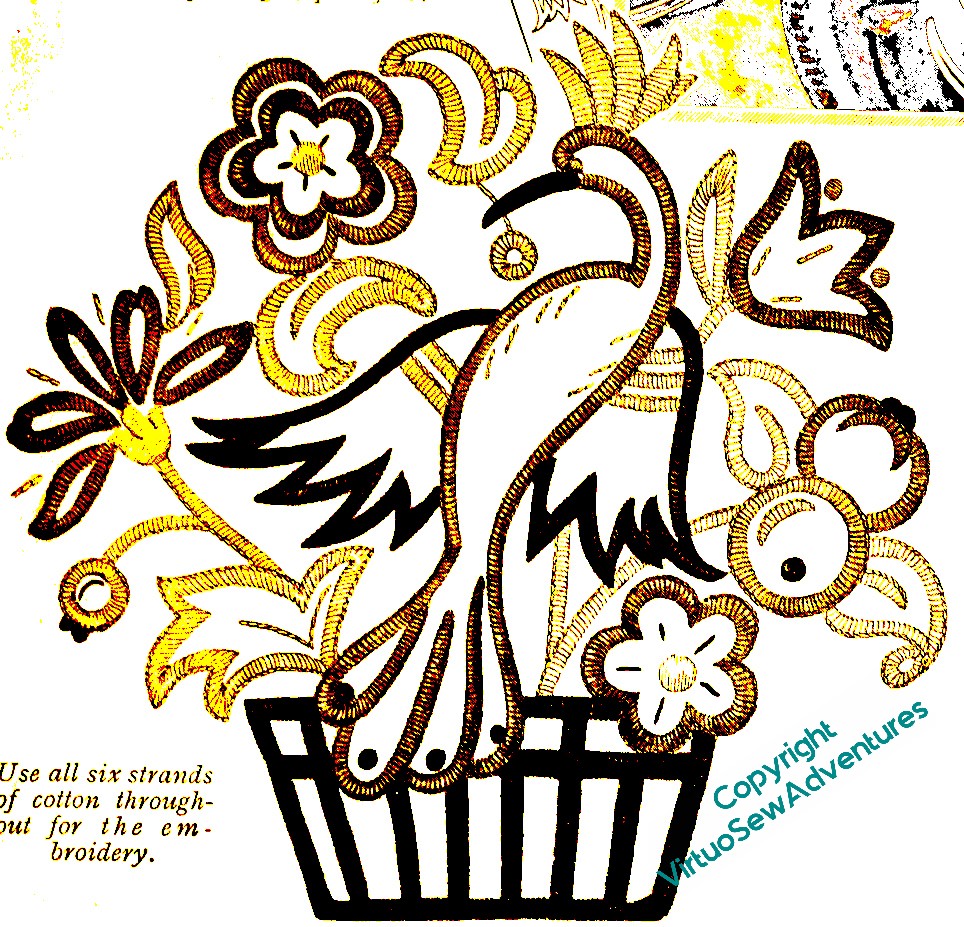
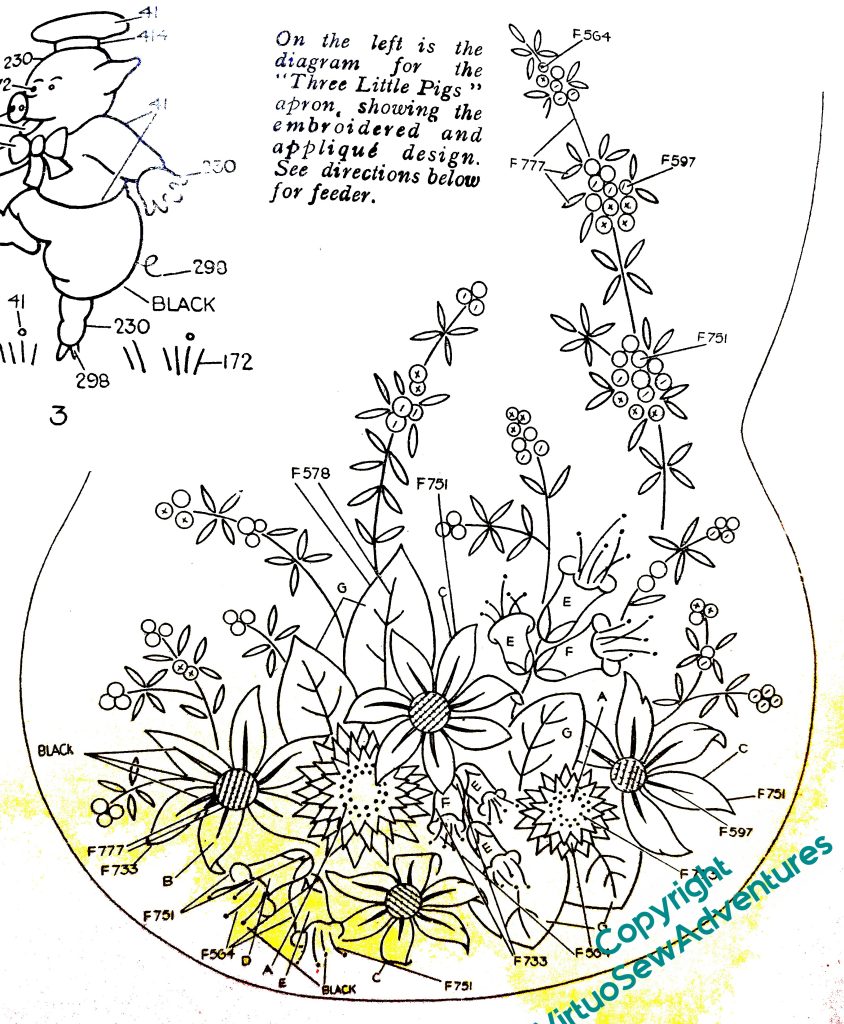
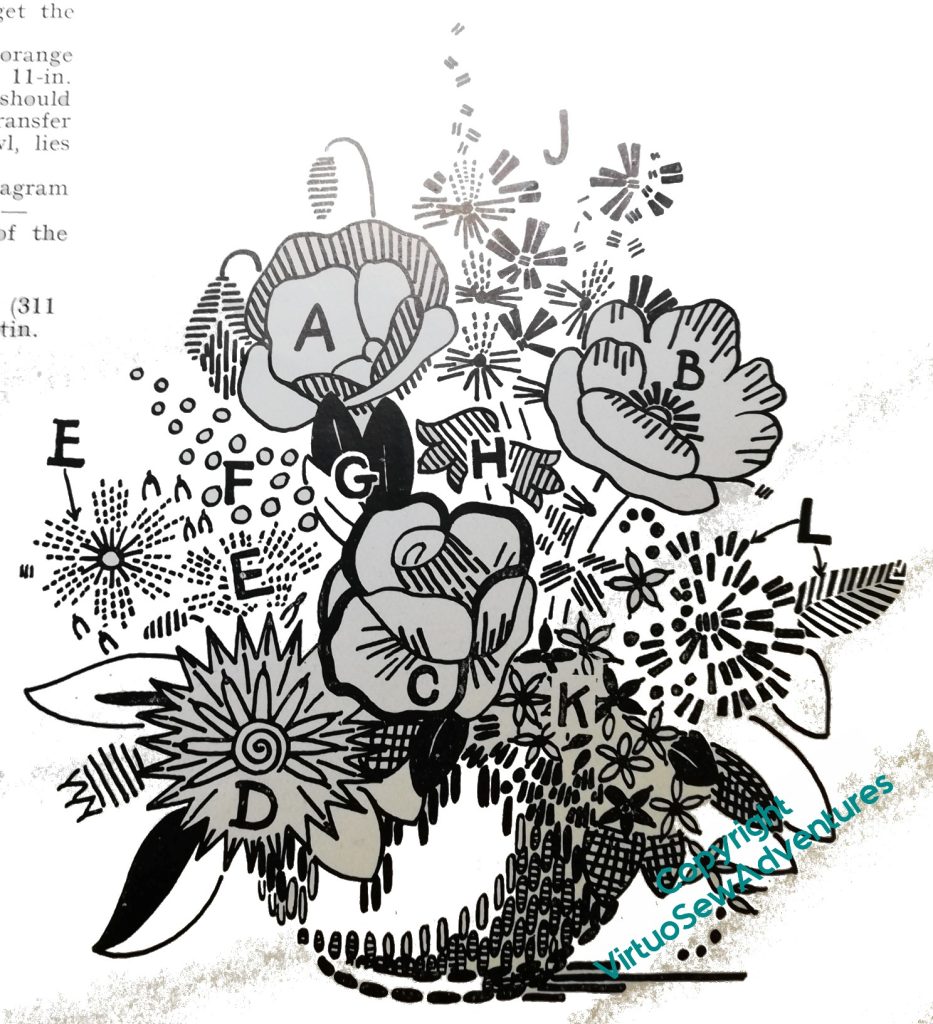
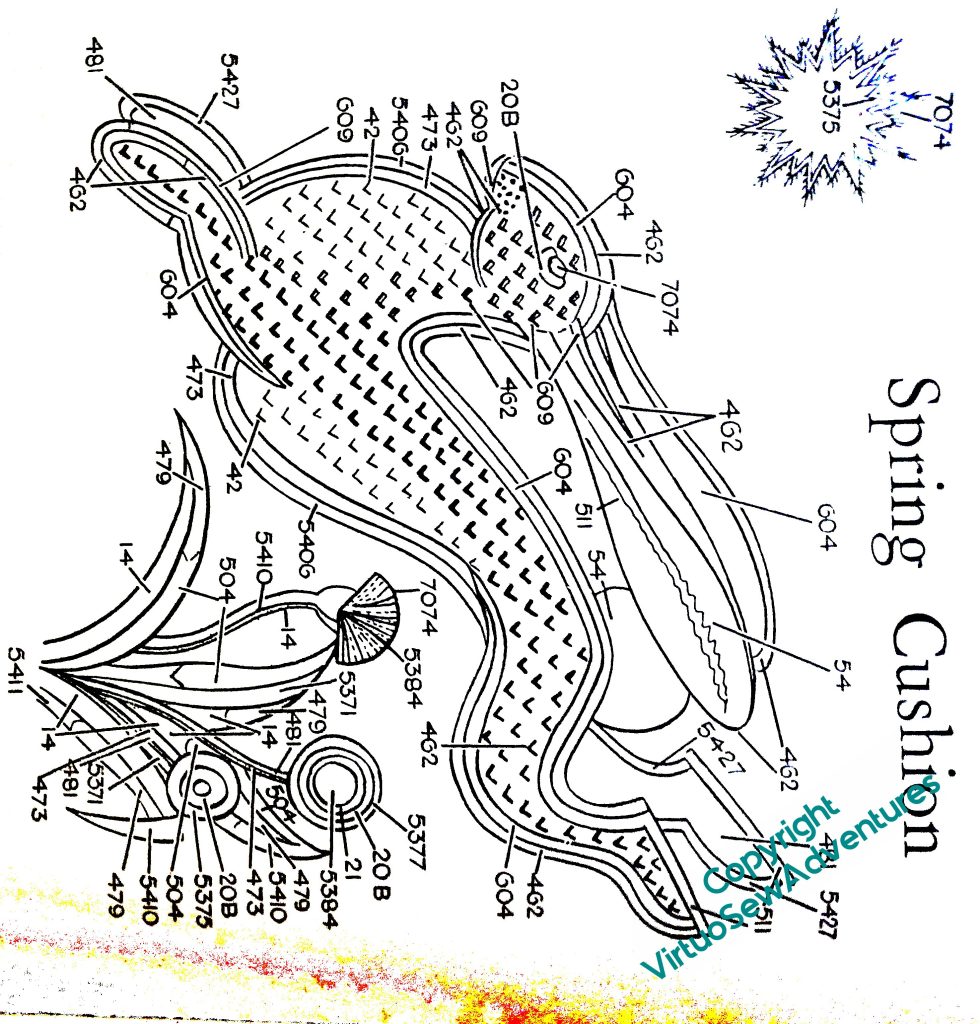
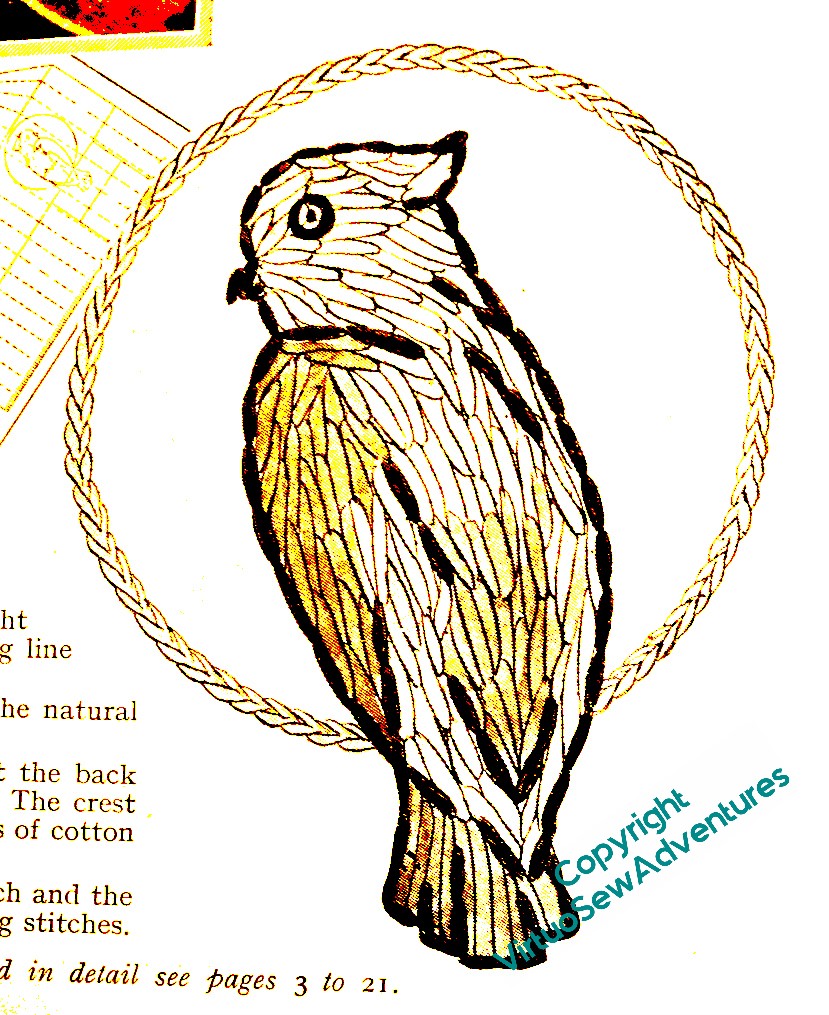
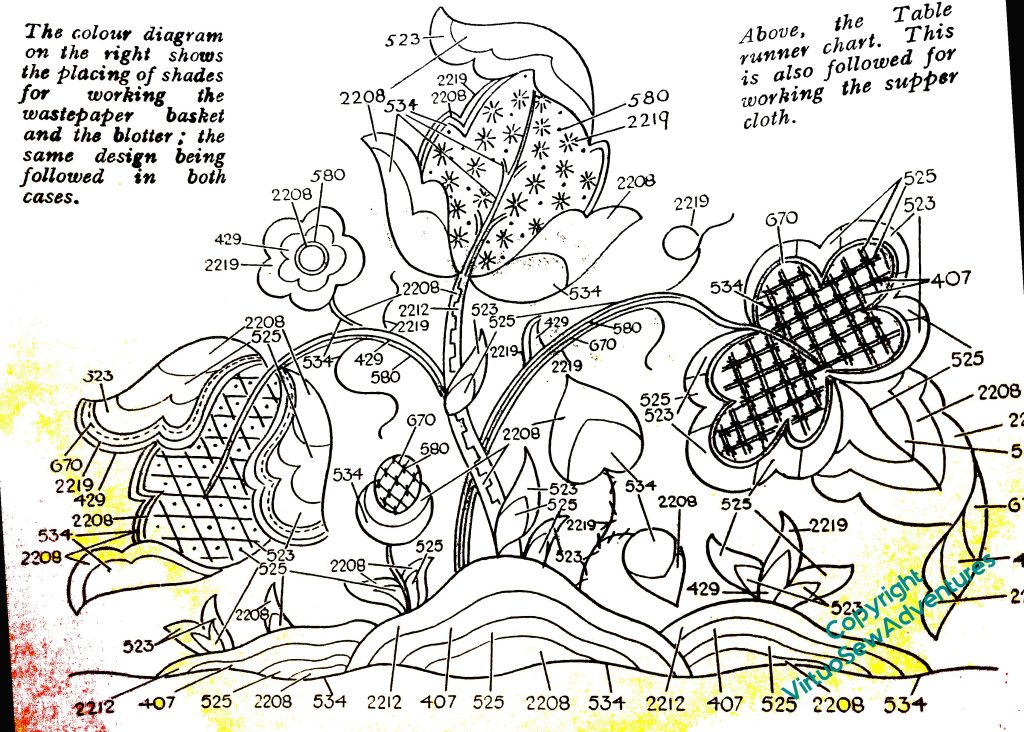
I went through my magazines, to find a selection of designs that were specifically intended for Anchor Flox, but not so huge (the Persian Fantasy Screen was intended for Anchor Flox, and that ends up as five feet by six!) as to demand more thread of each colour than I have.
I’ve decided to do one of the floral table runner designs, the middle of the top row here, because I think it will talk nicely to the Queen Anne style teacloth which is presently gracing a side table in the the living room. After that, if I seem to have enough, I am very tempted by that parrot…
Mending, Upcycling, and other adventures
As a family, we have always made and remade, mended and upcycled, garments, furnishing and furniture. There is a tale of five year old me, accompanying my mother to buy fabric for a dress in the now long-gone and much-lamented fabric shop in town, and piping up, as she was paying, to ask “What will it be _next_?”, so you can tell this is deeply ingrained!
Usually this is something I let pass without comment, but two episodes lately seemed worth mentioning, in case they give someone else an idea..
The Japanese mending technique for pottery, “kintsugi”, involves highlighting the mends with gold, so as not to obliterate the history of a piece. I can’t say I’m very good at it, but I had an entertaining afternoon with a kit that enabled me to play with the idea, at least.
And then my cousin mentioned a footstool she had with an entirely unsuitable cover for the surroundings, and a few oddments of furnishing fabric from earlier work on the room. Cue a Kintsugi-inspired crazy patchwork footstool cover, with all the seams emphasized with gold piping! This took some work and collaboration, as my sewing machine isn’t up to the task, but Mam’s was.
And on an entirely different scale – one of the problems with older knitwear is the way the ribbed cuffs seem to lose all their elasticity, and what was once a trim and neat shape, will often become shapeless and saggy with age. I’ve tried in the past adding elastic, but I couldn’t make that work (if anyone has – what’s your trick?), so it rather nags at me.
Then this winter we made a dress with rather extravagantly tucked sleeves, and I thought I had an idea that might work. I’ve created an inverted box pleat in the cuff here – it’s just held with stranded cotton at present, something that will show up so I can play with it until it works, and then do it properly (or not!) – and held it together, starting at the sleeve end, with crossing stitches. Then I caught down the side of the box pleat.
You can see in this picture how the cuff is now neat and close, and the sleeve has a bit more shape, and rather less “flop”. I’m very pleased with that, and I may extend this to other, similar garments.
Finally Displaying Tudor Trinkets!
As I forecast, I had a rather entertainingly messy time with plaster bandage and acrylic paint to create my Trinket Tree.
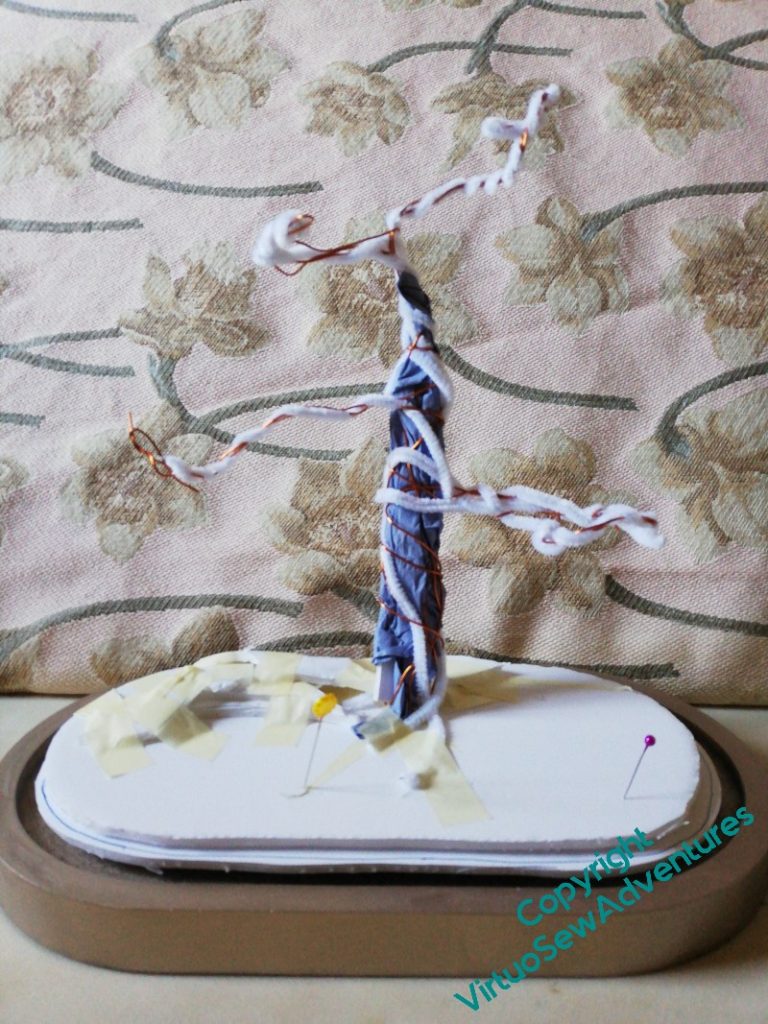
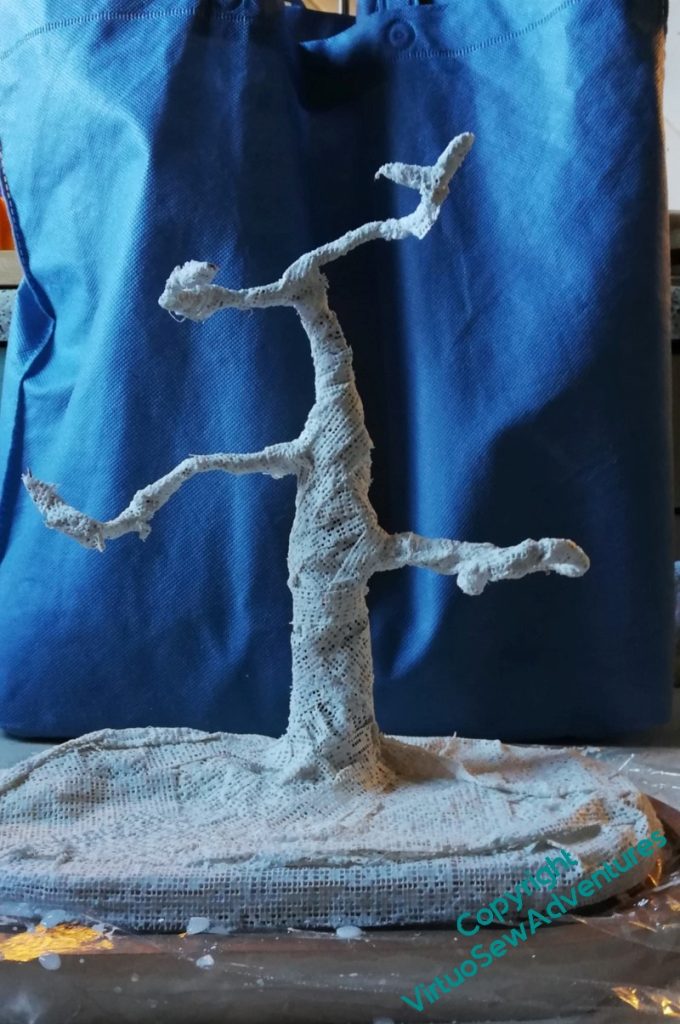
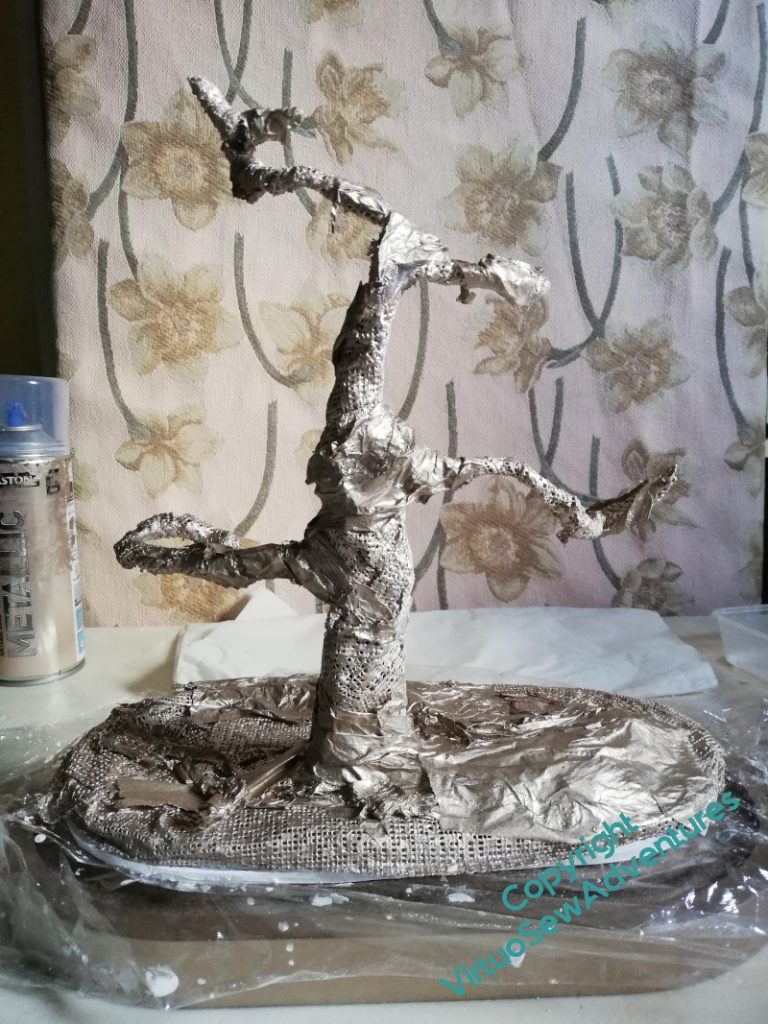
As you can see, foamcore, wire, crumpled paper and lots of tape were involved, as well as some tissue paper to vary the texture a little. Although I needn’t have worried – now the Trinket Tree is loaded, you can barely see it!
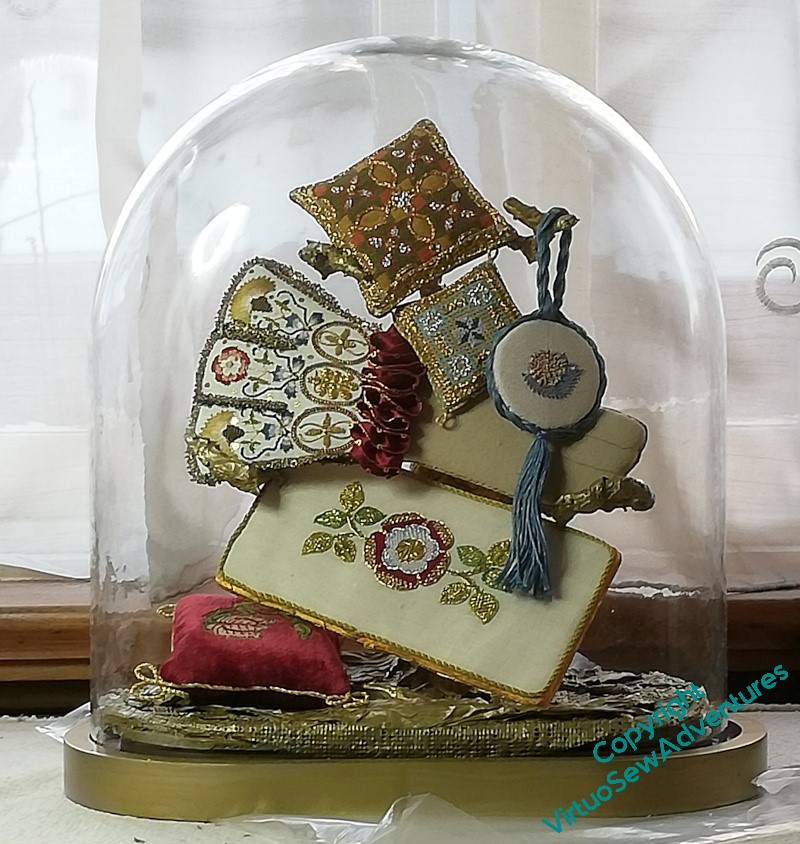
At present it sits on the hall table – the table it is on for this photograph is where I stitch and usually covered with bits and pieces relating to the current task. Not a good place for a glass dome, although it fits so neatly over the trinket tree’s base, that it’s quite hard to knock adrift!
Yet another idea!
Long time readers of my blog know that I use it, not just to talk about the embroidery I’m doing at the moment, but also as a place to put some of my ideas, in the hope that the Search facility will help me find them again, rather than having to paw (I use the word advisedly!) through stacks of paper and notebooks. This is one of those posts!
Some of you may recall that the Association of Mouth and Foot Painting Artists used to send out, not just cards, but little sheets that had angels printed on them. You could press them out and curve them into a cone shape, making a charming little Christmas decoration. I was reminded of them when we got the decorations out of the loft, and found a whole boxful!
It occurred to me that I could use a variation on that little pattern to create a needlelace Nativity scene.
That idea became a bit clearer when I looked at a few of them. If you look at this one, the angel’s wings have clearly been made to represent fabric with a bobbin lace edging laid over it, and if that necklace isn’t based on a piece of tatting, I have never seen tatting before!
Clearly, I would want to tweak the shape a little. Only the angel, of the characters in the Nativity, needs wings, and besides, I think a bit of variation in height would be advisable!
The basic shape can be seen when you open one of them out. The wings wouldn’t be hard to remove, for those that don’t need them. But the shape is fairly simple, and it would mean that I could use really gorgeous thread and stitch, allowing the thread and the stitch to do all the work.
I doubt I will be tackling the idea any time soon – I still have to work out how to create the Baby Jesus in the manger in much the same style! – but I think it would be fun to do.
A tree for the trinkets..
When I had the idea about using a parlour dome for the Violets and for the necklace, I realised that I would need to play with how I displayed them, trialled the Tudor Nightcap in the dome and realised that I could now put it on display.
So what about all the other Thistle Threads pieces?
Well, it turns out you can get parlour domes that aren’t round, so I got the largest I could bring myself to buy and then stopped to think…
I started by playing around with propping the various pieces I’ve been planning for that Winter Decoration Corner against one another within the dome. It’s a flattened oval, and quite high, but anything I could improvise seemed not to have the height I wanted without taking up all the display space.
I think this shows the idea will work, but it doesn’t really have the presence that the pieces deserve.
This is better. I’ve used offcuts of the foamcore that I bought to help me with Nefertiti and Akhenaten to create the base that will sit inside the glass, sandwiching the beginnings of the wires forming the tree between two layers. I’ve built up a support for the green and orange cushion at the back using smaller bits of foamcore, and wrapped pipe cleaners around the wires.
It’s not perfect, but I’ve set it up in the hall where I will pass it every day, to work out whether I like it. Then the idea is that I will have a lovely messy hour or so covering the wire with papier mache, allow it to dry, and paint the whole thing gold.
The Tudors were as fond of bling as the ancient Egyptians, after all!
Mending a tablecloth, second stage
Having settled on a smaller circle, but still worried about the stability of the fabric, I paused for thought.
I’ve used tear-out fabric stabiliser underneath the fabric, and placed a circle of it over the previous overcast stitch ring so as to leave trimming out what isn’t wanted until the last moment. It’s now enclosed between two layers of stabiliser, so I shouldn’t catch my needle in it.
And this is definitely a case for using a hoop. Most of my Amarna pieces have been worked in slate frames or bar frames, and the Jacobean coat is being worked in the hand, but a table-sized piece of fabric of which a small element is the focus requires a more limited approach!
I decided in the end to use simple cloth stitch for the needle lace, but of course, choosing to work it in a circle rather complicated matters! I had to use several lengths of thread, so it became a matter of concern to make sure that firstly, there was no chance of it coming undone, and secondly, weaving in the ends made sense!
It was also important to bear in mind that while classical, straight cloth stitch has a free “return” stitch, I couldn’t expect to keep control of a “return loop” in my circular variant. So instead of that, I whipped the base of the stitches to create the heavier line.
Once the needlelace was finished, I had to consider the edging. The whole aim of this exercise has been to cover the hole in the tablecloth in a manner that looks considered and deliberate – not just a mend, but a thoughtful mend. So the edging had to be thought about too.
In the end I chose to work a pattern in the buttonhole stitch – the uprights of the buttonhole stitch covering the split stitch and the edge of the needlelace alternate one long with two short. I also considered enlivening the needlelace with some daisies in white, reversing the blue on white of the main decoration, but decided that that was going a bit too far!

